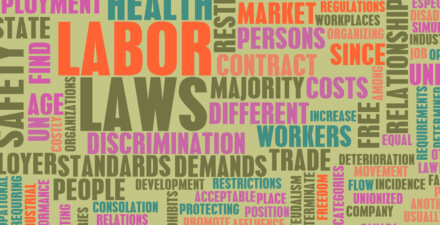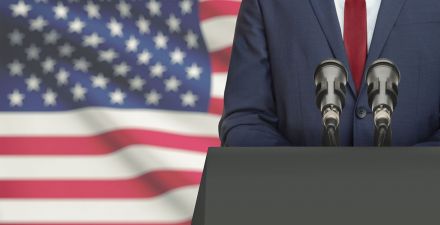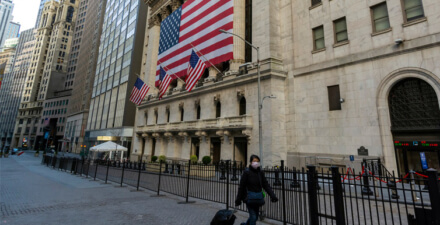Brad DeLong: Worthy reads on equitable growth, May 11-17, 2021
Worthy reads from Equitable Growth:
1. As I previously wrote, burning rubber and leaving skid marks as you rejoin traffic at speed is not the same thing as boiling over and melting your engine. My view is that we should not worry about an inflationary spiral from “overheating” until we have made back the 9 percentage points by which the price level today has undershot expectations of where prices today would be back at the start of the Great Recession. Read Equitable Growth’s “Overheating is not a concern for the U.S. economy,” which says: “Plans for further public investments should be judged primarily on the merits of those investments. Arguments that the U.S. economy will overheat ignore the need for additional investments in the economy and rely on the possibility of future policy errors to argue against needed investments today … The Congressional Budget Office’s estimates of potential GDP are highly influential, but critics argue, with substantial justification, that CBO analysts have been unduly pessimistic about the capacity of the economy in recent years, and thus overstate the risk of overheating … The U.S. economy has 10 million fewer jobs today than it likely would absent the coronavirus pandemic and resulting recession. This is why now is not the time for concern about overheating … Wendy Edelberg and Louise Sheiner of The Brookings Institution estimate that legislation of approximately the scale of the American Rescue Plan would restore actual GDP to potential GDP after the third quarter of 2021, cause GDP to exceed potential GDP temporarily by a modest 1 percent in the fourth quarter of 2021, and then allow GDP to roughly match its potential path in the middle of 2022 … Concerns about an overheated economy typically focus on a set of potential consequences that could arise if it remains overheated for a long time. If an economy remains overheated for many years, then that could lead to higher inflation. If the Federal Reserve, in response to that inflation, pushes the U.S. economy into recession by pushing up interest rates, then that could cause widespread harm … This concern is less about overheating specifically, and more about extended overheating followed by a bad policy response.”
2. This event looks very much worth attending this week. Register now for Equitable Growth’s Webinar: How to strengthen U.S. labor standards enforcement to protect workers’ rights on May 20, 2021 2:00 p.m. – 3:30 p.m. EDT. The event will examine “The COVID–19 pandemic that led to record unemployment [and] also devastated state and local government revenues across the country. With governments still facing extraordinary budget deficits, this fiscal crisis makes it even more difficult for state and local labor enforcement agencies to respond to labor violations, such as wage theft, just when this work is needed most. In this webinar, Equitable Growth grantees Janice Fine, Daniel Galvin, and Jenn Round of the Center for Innovation in Worker Organization at Rutgers University outline how labor standards enforcement agencies can strategically target high-violation industries. They will also describe how agencies can partner with worker centers, unions, legal advocacy organizations, and other community-based organizations to more proactively address labor rights violations.”
3. A key problem in dealing with a large and dissipative finance sector—one that consumes nine percent of society’s income rather than the three percent that it consumed back in the 1950s, and yet does not show any signs of adding anything of value in exchange for that extra six percentage points of society’s income—is that the overwhelming bulk of payments to financial intermediaries are “voluntary” yet not even semi-voluntary in terms of monopoly or monopsony rents. People think that they are getting a good deal when they pay the financial sector, even though the overwhelming evidence is that they are, in fact, not. Read Amanda Fischer, “The rising financialization of the U.S. economy harms workers and their families,” in which she writes: “Financialization refers to the process by which the financial sector—banks, private equity firms, hedge funds, stocks and derivatives exchanges, and other conduits through which money flows between those who have it and those who need it—takes up a larger and larger share of the U.S. economy, fails to allocate capital to its most productive uses, and increasingly results in the hoarding of economic, and thus political, power at the top of the income and wealth ladders … Corporate leaders themselves use their outsized economic power to influence the policymaking process in their favor … feedback loops where enhanced economic power begets more political power, with workers increasingly short-changed.”
Worthy reads not from Equitable Growth:
1. Noah Smith and I thought about what we now believe about capital gains taxes on our podcast, “Hexapodia XIV: The Capital Gains Taxes,” offering these key insights: Arguments against higher taxes that may have been somewhat plausible back in the days of 70 percent or so maximum individual and 40 percent or so maximum capital gains tax rates simply do not apply now … Right-wing parties that don’t think they can credibly make the argument that cosseting their core constituencies is necessary for rapid economic growth search for some non-economic cleavage in which the rich and the right-thinking poor, or the right-colored poor, can be on one side and the people who seek a fairer and more equal distribution of income and higher taxes on the rich can be put on the other … Capital to fund investment is really not a big constraint right now—incentivizing savings in financial assets really is just pushing on a string … Companies with investments that have high societal value in expansion need to be properly incentivized, and that is best done either by the smell of more profits next year from serving a larger market with lower costs of production through larger scale, or through the government paying and so getting prices righter than the free market can get them.”
2. Raising capital gains taxes produces large increases in societal well-being only if it is accompanied by effective loophole-closing. The very sharp Len Burman believes that it is indeed the case that the Biden Plan does this. Read his “Biden Would Close Giant Capital Gains Loopholes—At Least For The Rich,” in which he writes: “Critics of Biden’s proposal have several complaints. None hold water. Critics worry that raising capital gains taxes would lower the after-tax return for individual investors and drive down stock prices. However, taxable individuals hold less than one-third of corporate stock. The rest is owned by nonprofits, retirement plans, life insurance companies, and foreigners—none of whom pay individual income taxes on US capital gains and dividends.”
3. Best-case—the most optimistic scenario for employment—is employment corresponding to a “true” unemployment rate of 2.5 percent in 2023 with core inflation at 2.75 percent a year. That is enough to get inflation expectations up to the Fed’s target of 2.5 percent a year on a CPI basis. That is not enough for anyone reasonable to claim that an ever-upward inflationary spiral is on the way. The definition of “stagflation” is a world in which expectations are anchored on the belief that inflation is going to rise over time, hence an unemployment rate greater than the natural rate is required in order to hold inflation steady. That does not seem to be the world we are headed for in the optimistic scenario. And that stagflation equilibrium is much further away in the non-optimistic scenarios. Read Laurence Ball and his co-authors, “U.S. inflation: Set for take-off?,” in which they write: “How high is the ongoing U.S. fiscal expansion likely to push inflation? This column presents new evidence that underlying (weighted median) CPI inflation has so far steadily declined since the start of the COVID–19 crisis, broadly as predicted by its historical Phillips curve relation. If the ongoing fiscal expansion reduces unemployment to 1.5–3.5 percent, as some predict, underlying inflation could rise to about 2.5–3 percent by 2023. If the fiscal expansion is temporary and monetary policy remains clearly communicated and decisive, there is little risk of a 1960s-type inflationary spiral.”




